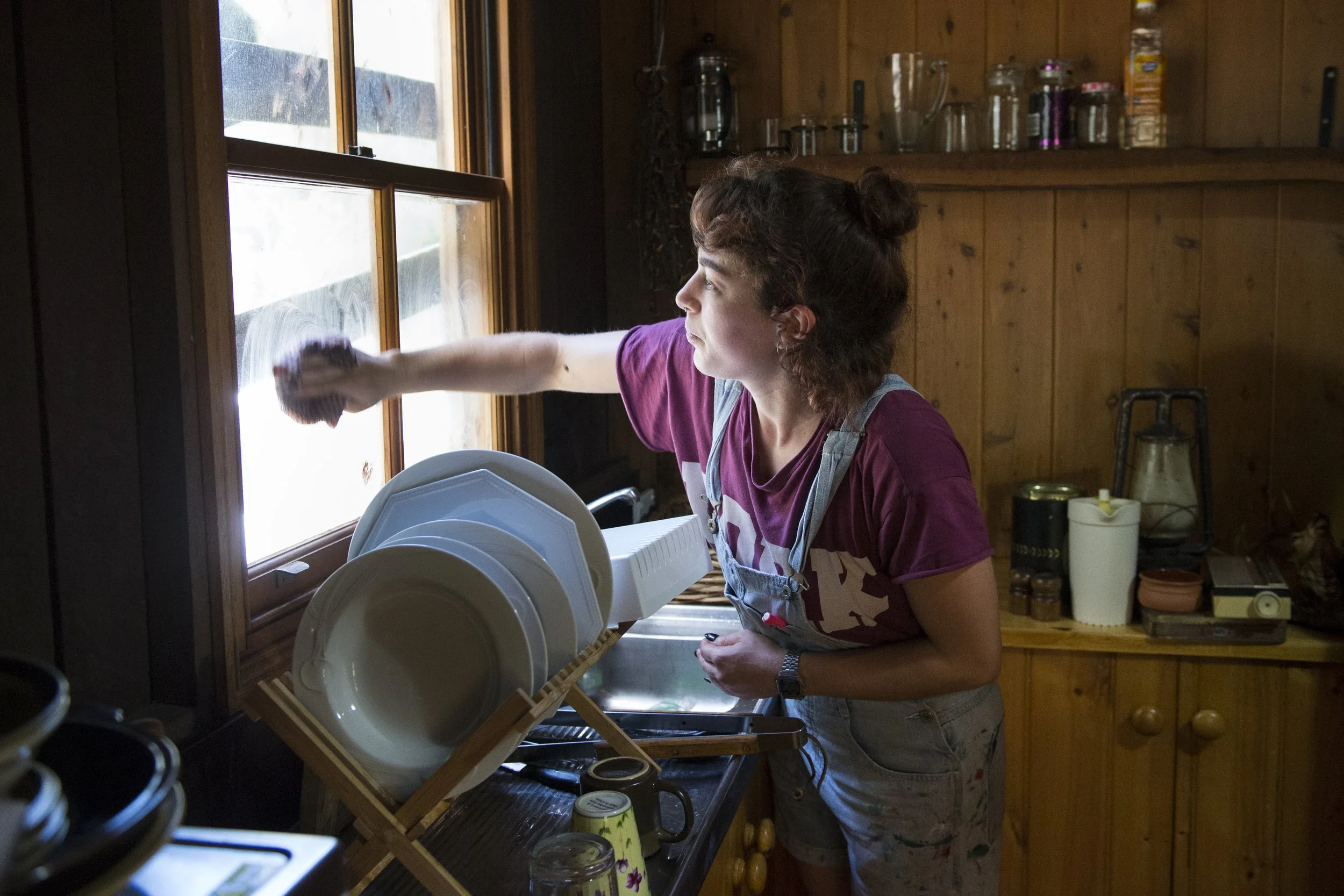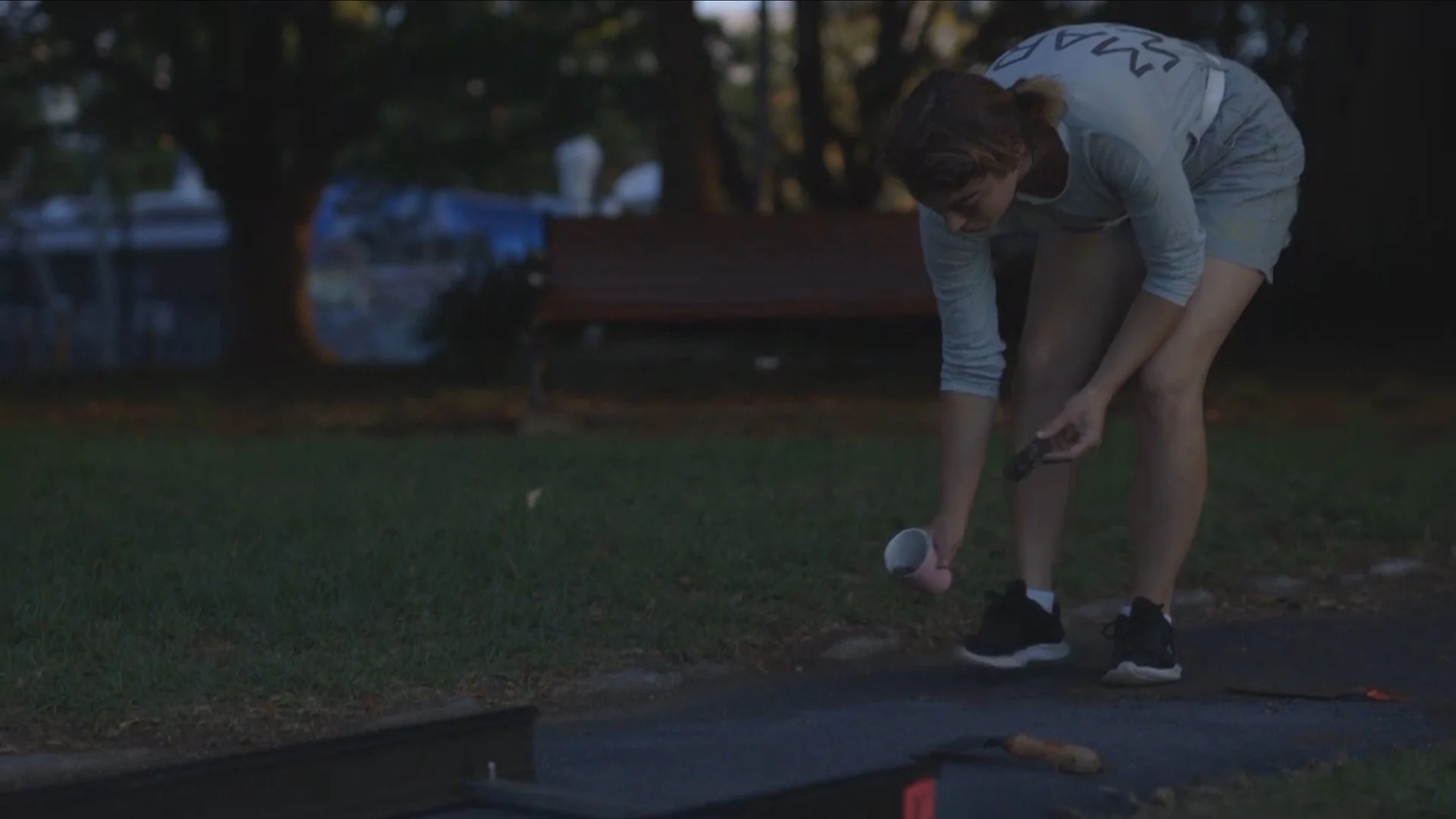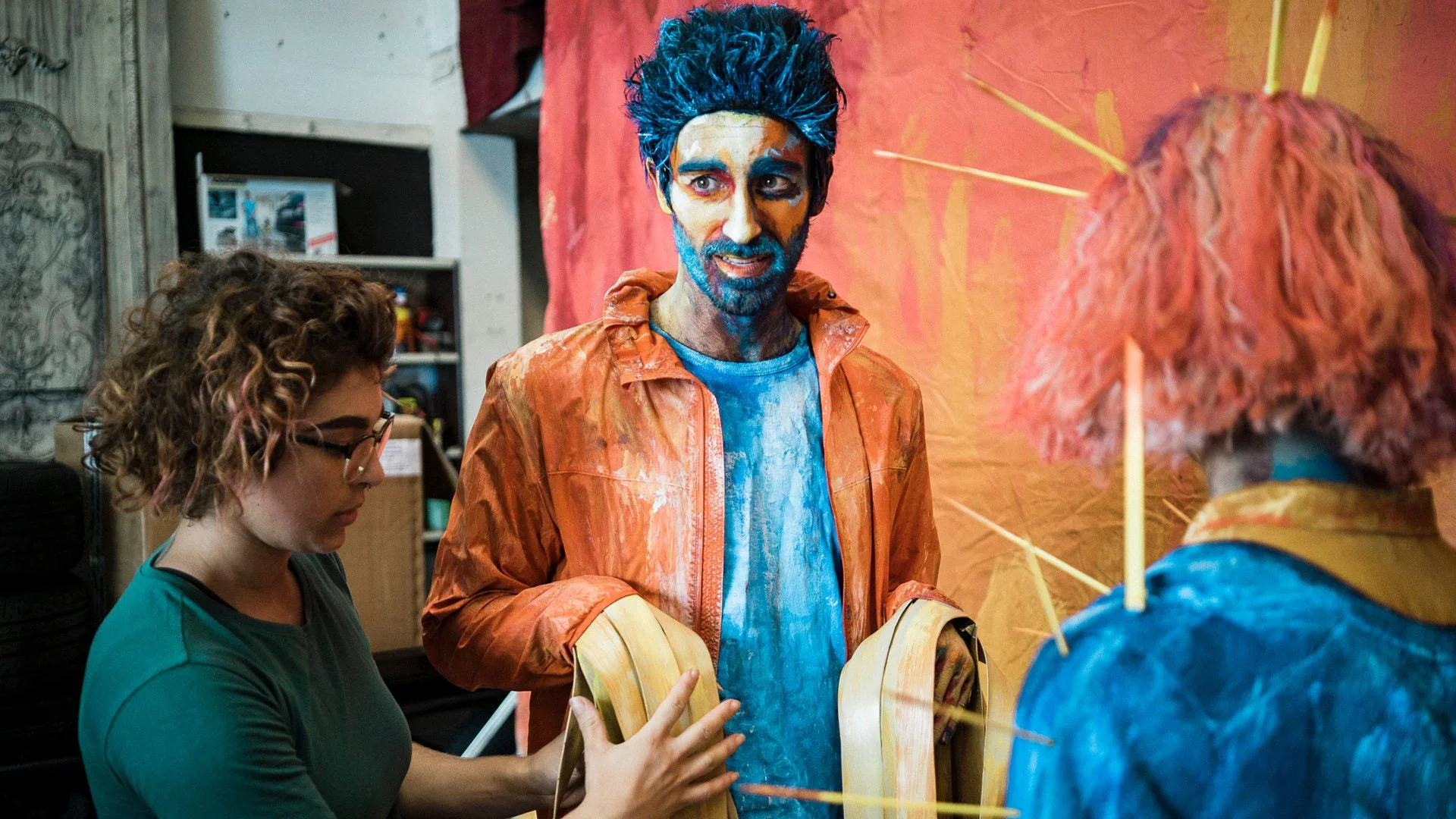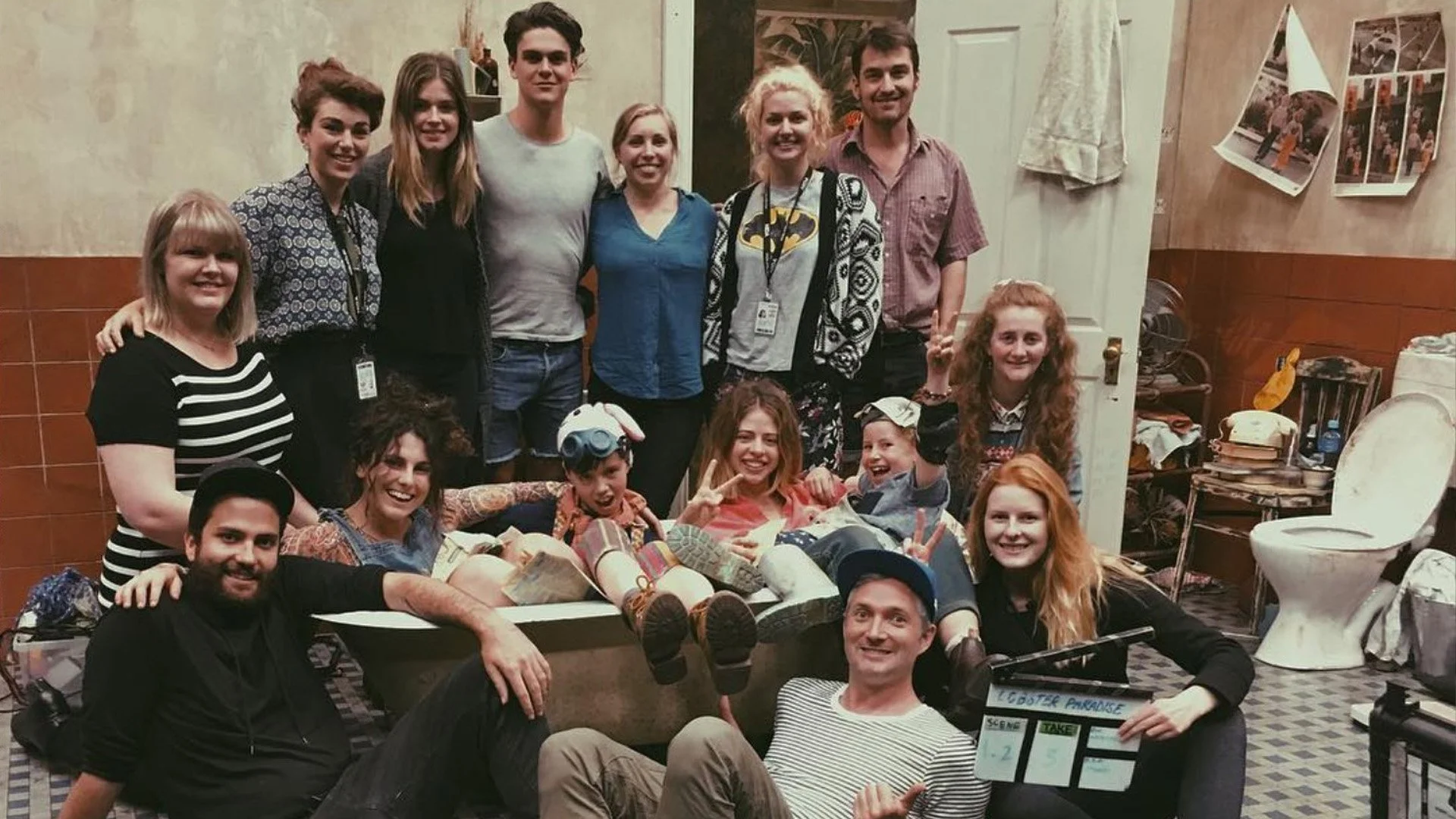Approaching A Designer - Tools for Initial Contact
Onset filming for Down In The Woods (2018)
The Process of Approaching a Designer
I have been a designer for almost a decade and in that time I have been approached by writers, directors, producers, and production companies, and a pattern that has emerged over the years. I had a wonderful phone call from a friend directing a feature and they wanted advice on approaching a designer and what to prepare. It was such a refreshing experience as I have had some requests to collaborate that have been quite difficult to navigate. I thought it was time to write a little blog about how designers like to be approached for work and some observations and tools to assist in creating a collaborative process from the get-go.
What I am looking for as an experienced designer is the following information and really the most basic introduction to the world and the project being proposed. What I need in order to consider a job is the following; the dates of the production (pre-production, filming and post-production dates), the location of production, my pay (flat rate, daily wage, or weekly with additional allowances for kit hire, car, laptop and /or phone), the budget for the design (I will elaborate in more detail below), visual stimulus (mood boards, pitch decks and treatments), and the script. Additional questions I often want to be answered are the expected turnaround of the finished production, when will it be published and where will it be showcased (festivals, online, streaming services or cinema release). The issue with being contacted with some of, or none of the above, is it does not give me enough information to consider a role. How do I know if this is something I want to design if the story aligns with my values, this is something I can assess by reading the script and seeing the visual stimulus. A value of mine that I am conscious of, especially in a script, is how female characters are written and portrayed.
A designer will be able to assess the amount of time and effort that goes into creating a design from start to finish. There is a huge amount of unseen work that goes into the design development and research process before we actually start seeing physical sets and props come to the screen.
In order for us to engage in a job, we need to know if we can attach ourselves to it creatively and emotionally, as the filmmaking process often requires commitment in both areas. What I’m looking for in a new project is often the style, script, content, narrative, and the end life of the project. I would like to know whether something I spend so much time, effort, and skill on is going to have an audience. Will it be seen at festivals around the world? Will it be published on YouTube? Will it go to a streaming service? Where can I expect my work to be showcased?
I thought I would write a little guide on approaching a designer and try to make it fun and optimistic so that if you have a director, writer, producer, or production company friends who are thinking of engaging a designer, they can use this as a bit of a guide to collaborating with us in the most thoughtful, caring, and creative way possible.
on location for filming Love Lost
Onset for filming Just Tell Him How You Feel
First of all, what is the project?
Script - A full script, or short synopsis of the script and an outline of the world. What can I expect to be building for you? Is it a period piece? A sci-fi? Or a small intimate family drama?
Length - What is the length of the proposed project? Is it an epic 3-hour film or a six-part miniseries?
Dates - Is it spread out over a few weekends over half a year? Is it crammed into four short, intense weeks? Or is it full-time for eight months? Knowing this allows us to decide whether we’re prepared to engage in a project of that scale, and if we have other work we need to shift or juggle.
Role - In what capacity are you engaging me? Be very specific about what role you would like me to fill. Is it a Production Designer, Art Director, Set Decorator or Costume Designer there are many roles in the Art Department and each of them carries its own skills and requirements. If you are combining roles it is necessary to be clear on that. For example, many commercials combine Costume and Set Designer into one role, if that is the case be clear on that point.
Fee - What is my fee? My fee is completely separate from the design budget. My fee is a reflection of the skill, training, experience, labour, and time I bring to the project. Are you paying me a one-off flat fee, which might be higher or lower than my standard rate? Or is it a fair wage, and I will be engaged for a few weeks or months on the project? Is it a profit share? Is it a very low-budget independent production that’s self-funded, but the script and story are so special and magical that the world must see it? In that case, I would like to know that from the start and have the autonomy to decide whether or not this project is for me based on my own financial needs at the time.
Budget - This is separate from the Fee. This is the money you have put aside solely for the design of the show. This can include but is not limited to the following considerations; sets (set drafting, construction, materials, locations), scenic painting (murals, aging, painting), sculpting (3D modelling, carving, moulding and casting), greenery (potted plants, landscaping) vehicle, weapons, graphics (Screen Graphics, printed or otherwise), props (special effects props, costume props, and consumables), food styling, set dressing, soft furnishing, Special Effects (SFX) and many more.
Onset filming Theo & Celeste: Ara Nuri Steel, Duncan Ragg & Shannon Ashlyn (2018)
Crew Photo Lobster Paradise (2016): Courtney Westbrook, Ara Nuri Steel, Ella Butler, Kyle Jonsson, Gabrielle Rowe, Heather Middleton, Damien Egan, Nick Fry, Charlotte Mungomery, Genevieve Graham, Mathilda Robba, Clare Staunton, Stuart Edgeworth
Mood/World - Do you have a pitch deck, director's document, storyboards, an animatic, a shot deck, a mood board, or even a Pinterest board? This is such an important step in the collaboration between all the Heads of Departments (HODs); Writers, Directors, Designers (Production Design and Costume Design), and Cinematographers.
Expectation—This also allows me to see whether the design budget allocated for set dressing, set building, scenic painting, graphic design, greenery, and props is sufficient to build the world you propose.
Collaborators - Knowing who the writers, directors, cinematographers, lighting designers, and lead actors are helps us see whether we can collaborate harmoniously with these individuals and if their professional values align with ours.
I want to expand on this for a moment; working as a designer in a world that's experiencing a climate crisis, environmental sustainability is a key factor for me. Knowing what will happen to the sets and props after we finish filming is crucial. Can we buy things secondhand? Can we get them off a marketplace? Could we hire them instead of buying brand-new items? Can we recycle flats from old theatre productions rather than using virgin materials that will end up in the dumpster? Can we create a design where everything can have an afterlife?
Working Process - What is your method of working? Do you prefer to be a pencil-and-paper, in-person kind of worker, or are you okay with collaborating on group mood boards digitally? Are you a Zoom caller? Do you like phone calls or FaceTime? Do you prefer in-person meetings with all the HODs to read through the script and digest the visual material together? Establishing this early on sets the expectation for regularity and type of communication, which is key to producing the end product in a collaborative and communicative way.
I hope this has been a useful tool for future creative collaborators to use when drafting their first contact with a potential Designer. Think before sending that email if you have included the above information and do you have enough before approaching that designer. Having experienced the positive impact this transparency has created I thought by detailing it here I could continue to form stronger bonds for those in the industry.
Often what we do as designers is a mystical process, and I’m hoping that through these blogs, bit by bit, I can demystify what it is that we do and how deeply we care about it. If you have any comments or stories you would like to share, I really look forward to hearing from you.





